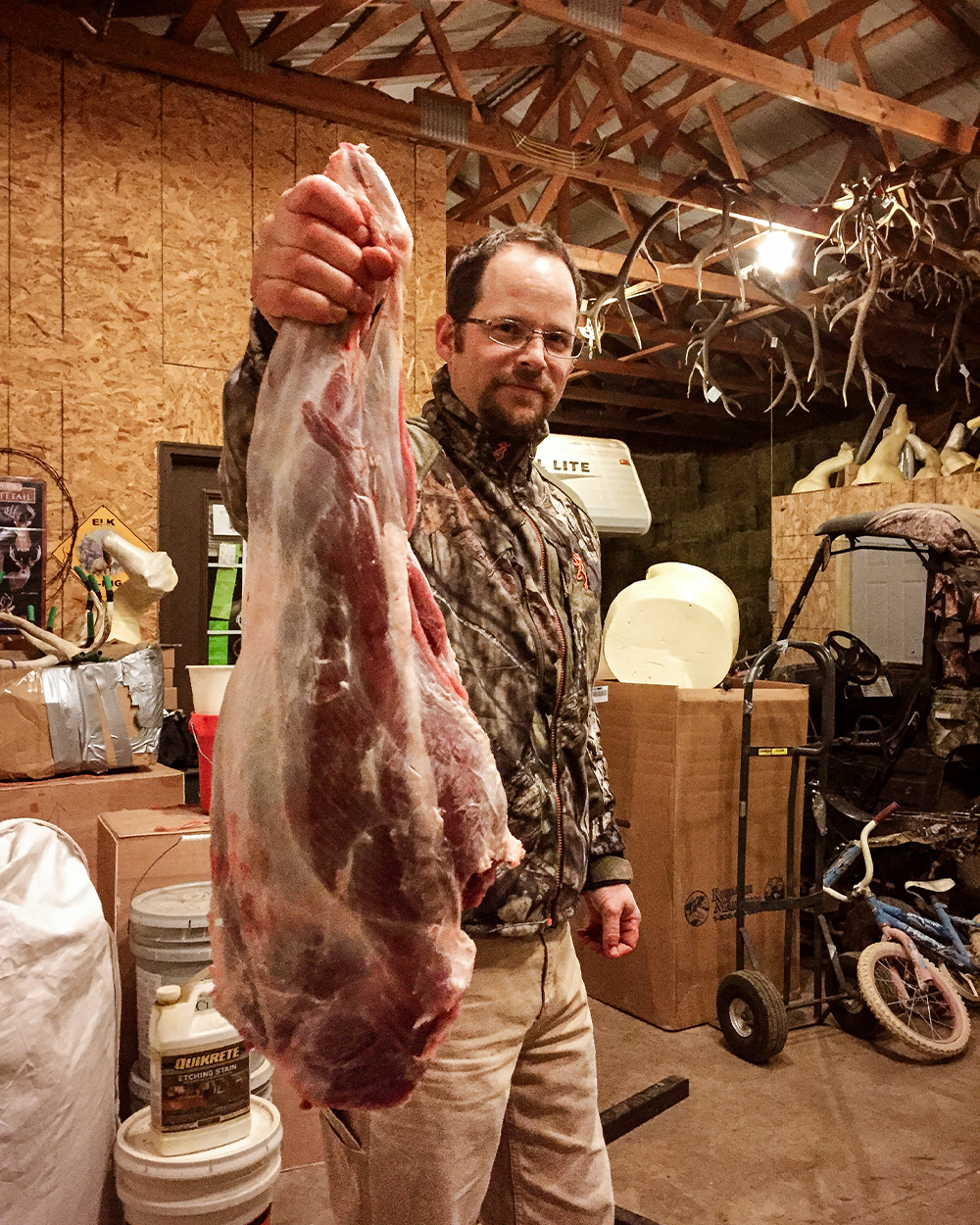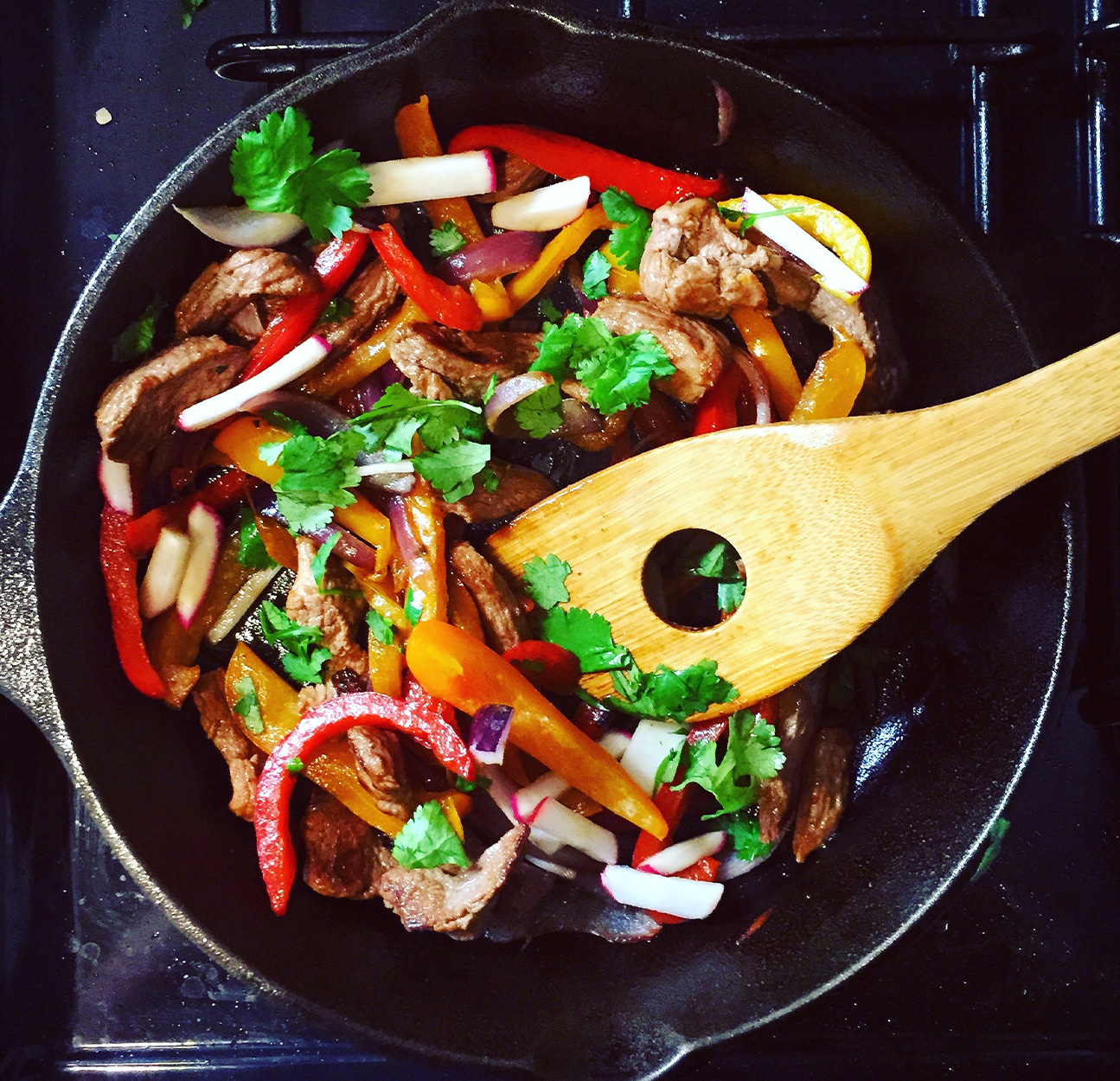Yes, Hunters Eat Mountain Lion Meat. Here’s How to Prepare It
Luke Ellsbury and his 16-year-old daughter had chased the lion for miles through a foot of snow in some of northwest Wyoming’s harshest country. Their bluetick-English coonhounds finally treed the cat on the far side of a steep ridge, about 7 miles from their truck. By the time they tagged the lion, they’d already been running for well over half the day, and they still had to skin and field dress it.
“There was no good horse trail or anything to travel in and out,” Ellsbury says. “Just getting to a lion is a lot of work.”
At that point, some lion hunters may have chosen to take the skull and cape and leave the meat, a practice that’s legal in some states like Wyoming and one that’s currently being leveraged to ban “trophy” mountain lion hunting in Colorado. Anti-hunters there are trying to persuade the voting public that hunters don’t eat mountain lion meat.
But Ellsbury, like plenty of cougar hunters, wanted the meat from his mountain lion. So, he and his daughter and two friends carefully removed the animal’s backstraps and quarters and packed them out, making the long haul back on that cold January day and reaching their truck after dark. Lion meat, Ellsbury says, is worth the work. Two years later, he’s still savoring the remaining packages of that lion’s meat. He made burnt ends out of it recently. “I’ve eaten my fair share of lion, and I really like it,” he says. “It’s pretty versatile and mild tasting.”
Read Next: 6 Wild-Game Rituals That Are About Much More Than the Meat
Ellsbury, a large carnivore biologist for the Wyoming Game and Fish Department, longtime houndsman, and former guide, doesn’t blame people for being gun shy about eating mountain lion. It is a cat, after all. But he and others insist it’s worth trying. And not unlike other wild game, from moose to bighorn sheep and chukars to sandhill cranes, mountain lion meat is best consumed while keeping a few best practices in mind. Here’s how to prepare and cook mountain lion meat.
Do People Actually Eat Mountain Lion?
Yes. Although mountain lion meat certainly isn’t as popular as wild game like whitetail deer or wild turkey, it is edible, tasty, and safe to eat when prepared properly. The meat from mountain lions and other predators, like black bears, has long carried a stigma because these critters eat other animals, which brings unfounded concerns about taste and safety. In reality, mountain lion meat tastes great, it’s lean, and relatively easy to cook, says Luke Worthington, a Wyoming hunter, guide, and founder of the Wyoming Houndsmen Association.

Photo by Natalie Krebs
“It tastes a lot like pork,” Worthington tells Outdoor Life. “I do the old shake and bake with it, where I cube it up and put it in shake and bake and fry it.”
And that stigma around mountain lions has changed dramatically over the last 15 to 20 years. Worthington says his clients are becoming more interested in hauling out lion meat to take home. He credits a growing movement focused on eating other, more nontraditional types of wild game.
“I tell people, ‘This is good meat and edible meat, and it’s worth it. If you kill an animal, it’s worth taking the meat,’” he says. “The least you can do is try it.”
What Does Mountain Lion Meat Taste Like?

Photo by Natalie Krebs
Most people who’ve eaten lion say the meat tastes much like a lean pork, with a mild or almost sweet flavor that is well suited to picking up other flavors in marinades, rubs, or sauces.
Ellsbury also says that while the fat from a deer or elk can be waxy and unpleasant tasting, lion fat — like bear fat — can be quite good. He likens lion fat to pork fat, although the two animals have vastly different quantities. (Lions are much leaner.)
What About Food Safety Concerns?

Photo by Natalie Krebs
A common concern that many people have with lion and bear meat is trichinosis, a food-borne disease caused by a parasitic worm that lives in meat-eating animals. The worm doesn’t seem to bother mountain lions, but it does affect humans and can be fatal if left untreated. Historically, most people contracted trichinosis from eating undercooked or raw pork, but advances in commercial food and farming regulations have largely lowered the risk, according to the Centers for Disease Control and Prevention. There is still a risk with meat from mountain lions, wild boar, and bears, but it’s minimal: the CDC reports that the U.S. only sees about 15 confirmed cases per year.
While the risk of contracting trichinosis to humans is low, it still exists. That means hunters need to be sure they kill those parasitic larvae before eating.
Read Next: The Best Morel Mushroom Recipes
To safely prepare mountain lion meat, don’t cook it rare or medium-rare. Instead, cook it thoroughly to an internal temperature of 165 degrees Fahrenheit. The CDC also notes that “Curing (salting), drying, smoking, or microwaving meat alone does not consistently kill infective worms. Homemade jerky and sausage were the cause of many cases of [trichinosis] reported to CDC in the past.”
How to Butcher a Lion
Because most lion hunters want the cape, Worthington recommends carefully skinning the animal before beginning to remove meat. From there, butchering a mountain lion is similar to quartering and butchering an ungulate. Just be sure to field dress your lion as quickly as possible. Because lions eat other animals, their guts can cause the meat to spoil quicker than a deer’s, Worthington says.

Photo by Natalie Krebs
For hunters who are unable to pack out an animal whole, consider the gutless method and remove the front and hind quarters, backstraps, and edible portions of the neck.
Worthington cautions that, depending on the size of the cat, the front shoulders may not offer much meat, and the backstraps are often about as round as a hefty bratwurst. But he says they’re still worth saving to cook later.
Dan Thompson, Wyoming Game and Fish Department’s large carnivore section supervisor, cautions hunters to avoid a lion’s anal glands when skinning and field dressing the animal. The glands, used by cats and dogs to mark their territory, are pungent and can ruin the meat if punctured.
To prevent accidental infection from trichinosis, wear disposable gloves when handling the lion and meat, and wash your hands thoroughly when you’re finished.
Tips for Preparing Lion Meat

Photo by Natalie Krebs
Consider dividing meat into roasts, steaks, and ground burger. Ellsbury and Thompson both recommend slow cooking roasts in a crock pot with carnitas seasonings to make tender tacos, or with barbecue seasonings to create pulled lion sandwiches.
You can also marinate and grill steaks. But while you need to make sure the internal temperature reaches 165, be careful not to overcook lion meat as it can easily dry out and become tough.
If you’re looking to impress someone who might be skeptical of mountain lion meat, Thompson recommends this recipe for pork stuffed mushrooms by Steph Gaudreau. As with other recipes, you can easily substitute ground lion meat for ground pork.
Lion Stuffed Mushrooms
Ingredients
- 8 oz ground lion
- 12 large button mushrooms
- ½ large onion, diced
- 3 cloves of garlic, minced
- 1 inch fresh ginger or 1 tsp ground ginger
- 1 tbsp coconut oil
- 2 tbsp almond flour
- 2 tbsp chopped cilantro
- Salt and pepper to taste
Instructions
- Preheat oven to 350 degrees Fahrenheit.
- Clean mushrooms, remove stems, scoop gills and chop stems.
- Sauté garlic and ginger in the oil for 30 seconds then add onion and mushroom stems.
- Place in a large bowl to cool. Then add almond flour, cilantro, salt, pepper and ground lion.
- Place small balls of the mixture into mushroom caps on a foil-lined sheet.
- Bake for 20 minutes or until the internal temperature reaches 165 degrees.
The post Yes, Hunters Eat Mountain Lion Meat. Here’s How to Prepare It appeared first on Outdoor Life.
Source: https://www.outdoorlife.com/hunting/eat-mountain-lion-meat/





